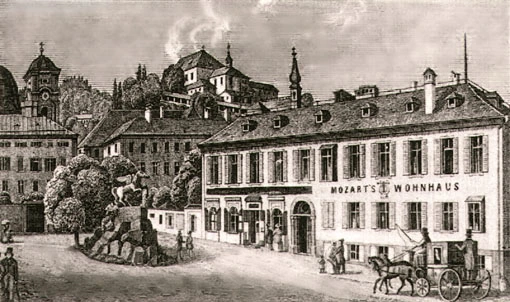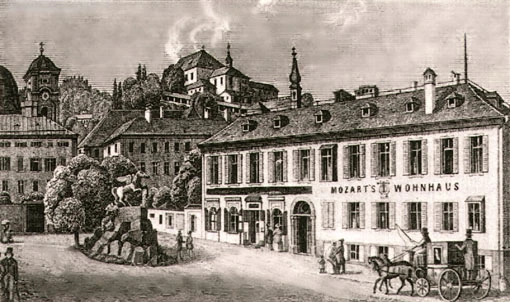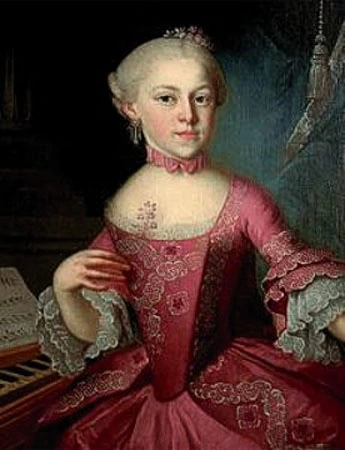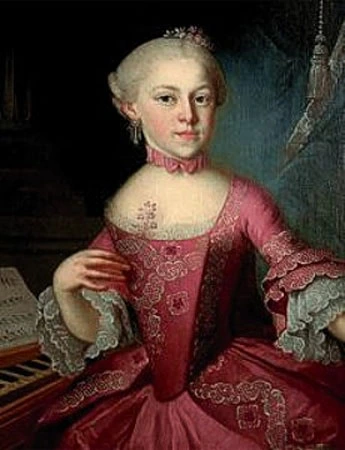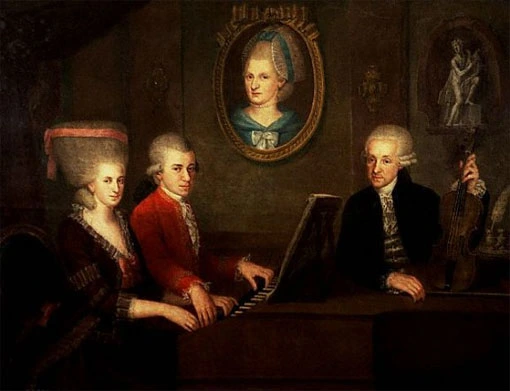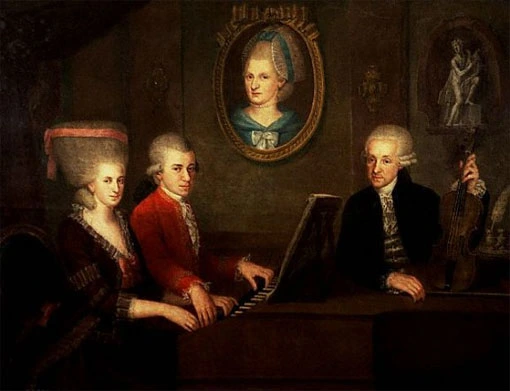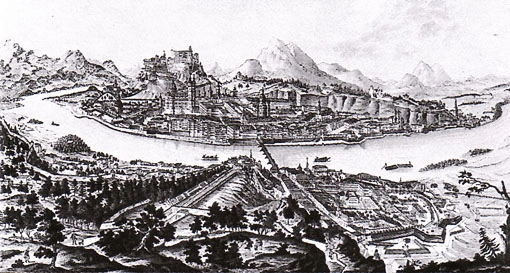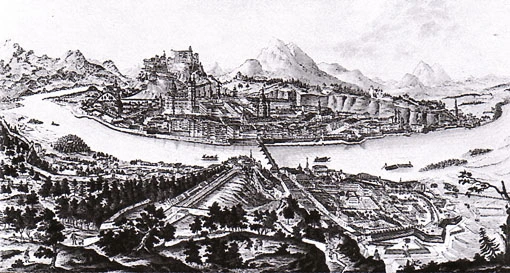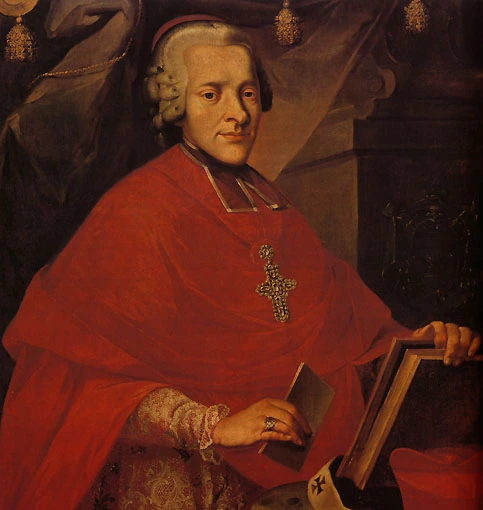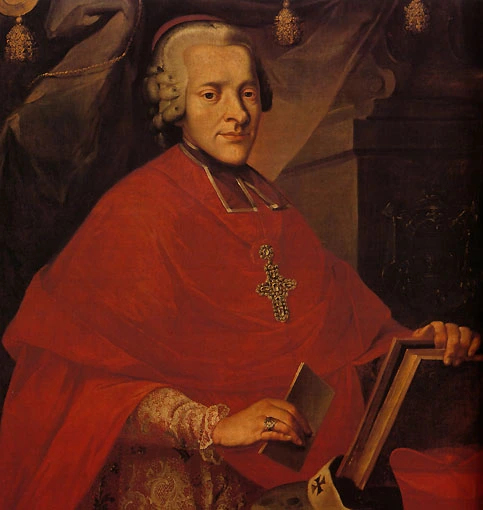Salzburg and tours (1773–1781)
As a young man, Wolfgang Amadeus Mozart followed his father into the service of the prince-archbishops of Salzburg.
Since the late Middle Ages, Salzburg had enjoyed the status of an ecclesiastical principality, with its prince-archbishops acting as regents. Many of these prince-archbishops, including Wolf Dietrich von Raitenau (who served from 1587 to 1612), Markus Sitticus (1612-1619), Paris of Londron (1619-1653) or Johann Ernst von Thun und Hohenstein (1687-1709) promoted culture and the arts at their courts, and the buildings they erected are still Salzburg landmarks today.
At the time Wolfgang Amadeus Mozart was admitted to the archbishop's court orchestra, Salzburg was ruled by Sigismund Christoph Graf von Schrattenbach (1753–1771). Schattenbach was a great patron of music in general and – despite the odd dispute occasioned by Wolfgang and Leopold’s frequent tours – of the Mozart family in particular.
When Schattenbach was replaced by Hieronymus von Colloredo-Mannsfeld (1772–1803), Mozart's relationship with his employers began to deteriorate. Colloredo-Mannsfeld has gone down in history as the man who committed the grave error of dismissing Mozart from the Prince-Archbishops' service, but it should not be forgotten that he was also a ruler committed to reform and the principles of the Enlightenment. He also reined in the lavish baroque court of his predecessors' regimes, which had its own impact on musical life in Salzburg.
W. A. Mozart
W. A. Mozart
W. A. Mozart
As a musician, Mozart was part of the Salzburg archiepiscopal court. This meant that he was dependent on Salzburg's rulers for his income and occupied a salaried position. Over the years, this relationship became ever more difficult for him to reconcile with his self-image as an artist. To escape from his position in Salzburg, which he was finding increasingly restrictive, in 1777 Mozart terminated his employment and left the archbishop's court to travel. One of his destinations was Mannheim, where he became acquainted with the Hofkapelle, then considered one of Europe's best orchestras. He hoped to obtain employment from the orchestra, but those hopes were dashed, and he moved on.
While Mozart was in Paris in 1778, his mother died. Mozart returned to Salzburg and accepted a position as a court organist to the prince-archbishop. Successes like the performance of his opera Ideomeneo in Munich in 1781 led Mozart to see his post in Salzburg as more and more of an imposition. Finally, in 1781, he broke with the Archbishop for good and moved to Vienna.
W. A. Mozart
W. A. Mozart
W. A. Mozart
W. A. Mozart
W. A. Mozart
W. A. Mozart
W. A. Mozart
W. A. Mozart
